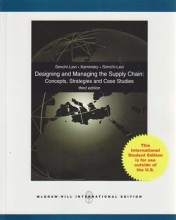Emotions - BN Attention
14 important questions on Emotions - BN Attention
Role of noise masks between scenes
Thus, this makes it less likely that your attention will be grabbed by the transient visual signals associated with the changed objects themselves. Makes it harder to spot the change
Damage to V1 - Small, Unilateral, Total destruction
Small - scotoma (i.e., a small patch of blindness) in one hemifield
Unilateral - cause blindness in the whole of the contralateral visual field (an homonymous hemianopia)
Total destruction of V1 - Result in complete cortical blindness (i.e., an absence of conscious vision in both visual fields)
What visual capacities do patients preserve in blindsight?
Manual and saccadic localisation
Wavelength and motion discrimination
- Higher grades + faster learning
- Never study anything twice
- 100% sure, 100% understanding
Petrimetric testing in blindsight
Petrimetric testing in blindsight - What does it show?
Who did the experiment on selective attention? What did he want to find out?
Wanted to determine how much visual info can be processed following brief glimpses
What did Posner find? How have the results been interpreted?
These results have been interpreted as indicating that attention enhances the rate of information processing at attended relative to unattended locations
Goldberg's experiment findings
What is change blindness? What does it suggest?
Suggests there is a limit to the amount of visual information that can be encoded, maintained and compared across successive glimpses, contrary to our subjective impressions.
Damage to the parietal lobe - When does it occur? How do patients behave?
Occurs after damage to one side of the brain (usually the right hemisphere)
Who experiences spatial neglect?
Other brain areas: superior temporal gyrus (STG), inferior frontal gyrus (IFG), and middle frontal gyrus (MFG).
Can patients who suffer from spatial neglect experience unconscious processing of neglected information? If so, how?
Question: ‘If you had to choose, in which house would you prefer to live?’
For trials in which the flames were on the right, the patient always indicated the house without the flames as the one in which she would prefer to live, saying she wouldn’t want to live in a house that was burning down
Can patients who suffer from spatial neglect process the neglected stimulus unconsciously? If yes, why?
Damage to the parietal cortex impairs selective attention, and so patients remain unaware of perceptual inputs on their affected side.
But the object recognition pathways continue to function normally, processing object identity without the patient’s explicit knowledge.
Spatial neglect - What happens when attention is drawn to omissions?
The question on the page originate from the summary of the following study material:
- A unique study and practice tool
- Never study anything twice again
- Get the grades you hope for
- 100% sure, 100% understanding
































